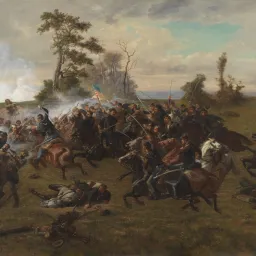1877 to 1924
Virginia and Women’s Suffrage

Despite the socio-political changes that occurred during Reconstruction, women at the dawn of the twentieth century still lacked a basic right of citizenship: the vote. Even before the Seneca Falls Convention of 1848, American women clamored for full citizenship. Unlike women in the North and West, southerners were reluctant to form pro-suffrage organizations because of opposition from local governments. By 1909, the tide of sentiment shifted; Lila Meade Valentine, Adèle Clark, Ellen Glasgow, and other Virginia women launched the operations of Virginia's Equal Suffrage League.
Women in the Progressive Era
From 1890 to 1920, America saw exponential growth in urbanization, industrialization, and political reform. Virginia women, like other women nationally, fought for voting rights to implement more effectively the social changes they championed. They supported education reform, child labor laws, and the temperance movement. Concepts like racial equality or upward mobility for the poor, however, proved too radical for consideration.
A Fierce Sisterhood: Virginia’s Suffragist Leadership
Facing strong opposition, Virginia’s suffrage groups––like their national counterparts––placed charismatic and well-connected women in charge of their campaign for the vote. Individuals like Lila Meade Valentine, Adèle Clark, Mary Munford, and Janie Porter Barrett used their financial, political, and social clout in their battles for female equality. Their unique contributions were essential to the success of the movement.
Virginians Opposed to Suffrage
In 1919, an amendment was proposed by Congress giving women the right to vote. Virginia’s Equal Suffrage League was among many organizations nationwide that had lobbied local governments, Congress, and the president to enfranchise women. Virginia’s General Assembly, however, was unmoved. Forty states ratified the 19th Amendment, and it became law in 1920. Virginia’s legislature stubbornly refused to ratify it until 1952.



















